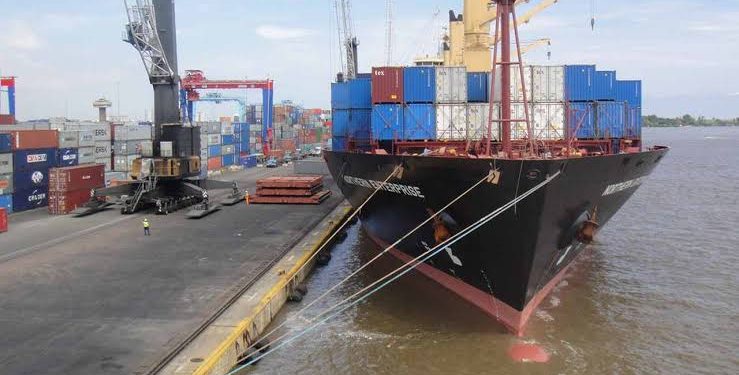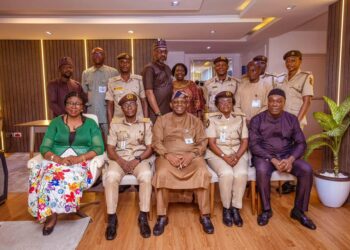
Amidst several controversies surrounding the defunct Ship Building and Ship Acquisition Fund (SASBF), Nigerian ship owners have raised alarm over the uncertain status and alleged mismanagement of the Fund which is allegedly in custody of the Nigeria Maritime Administration and Safety Agency (NIMASA).
Maritime stakeholders have called for transparency and the release of accumulated funds to support the struggling industry players. This is even as they challenged NIMASA to provide clear answers regarding the whereabout of the fund.
In a chat with Shipping Position Daily, a foremost ship owner and former Minister of Interior, Captain Emmanuel Iheanacho while addressing recent controversies surrounding SASBF, detailed how he received $2.5 million loan from the SASBF, used it to purchase an old ship, which he successfully traded for years. He alleged that the funds are still in the coffers of NIMASA and called for the release of the accumulated funds to support other maritime entrepreneurs.
Despite successfully repaying the entire $2.5 million loan and eventually selling the ship for scrap, Iheanacho criticized the lack of continued support from the SASBF. He argued that timely reinvestment could have allowed for the acquisition of better ships and sustained operations.
Captain Iheanacho also pointed out the inconsistency in loan repayments among beneficiaries, noting that while he and some others repaid their loans, many did not. He expressed concern over Nigeria’s repeated failures to effectively finance ship ownership and called for a more functional approach to support ship owners and master mariners.
In his words: “So if you remember what happened with the SASBF, I got $2.5 million dollars. I can only account for my own because, I bought the ship and brought it to be launched here. It was an old ship but that’s what $2.5 million could buy and I traded with the ship and everybody was listening to how we were trading, including the story about the fish that collided with the ship and wedged in the bow of the ship in South Africa.
“I paid all my $2.5million and sold the ship to scrap. They would have made sure that we got money that was more than $2.5 million, pay back and then also other people can then move in. People are agitating and asking that the money be released. And they have the right to ask that the money be released. There have been lots and lots of stories, but people just don’t want to face facts. I’m alive. If you ask whether I paid back, people are there. I paid back the money”.
Speaking exclusively with Shipping Position Daily last week, the president of Nigerian Association of Master Mariners (NAMM), Captain Tajudeen Alao, explained that the then-National Maritime Authority (NMA) originally implemented a two percent levy on international cargo for the purpose of developing the shipping sector. He added that an additional one percent was later added for administrative purposes, making it a total of 3 percent. He said this levy has been in place, even before the Cabotage Act of 2003.
Highlighting historical context, Captain Alao mentioned that during General Sani Abacha’s regime, there was a verbal pronouncement halting the disbursement of ship acquisition loans. However, this decision was not formally documented.
Alao further clarified the distinction between the different funds noting that the 3 percent levy is an international levy under the NMA Act of 1987, which is incorporated into the NIMASA Act of 2006. He added that this is different from the Coastal and Inland Shipping (Cabotage) Act funds, such as the Cabotage Vessel Financing Fund (CVFF), which deals with coastal trade.
The Master Mariner emphasized that this suspension is illegal as long as NIMASA continues to collect the levy. He however called for accountability and adherence to the original intent of the levy.
“That money has been there before the Cabotage Act came in 2003. That promotional aspect, NIMASA is not doing it anymore and they are still collecting the money. They stopped ship acquisition loans, shipyard repair loan and ship building loan. They just suspended it which is illegal,l because the position is still in the law as long as they are collecting the money. If they must stop the loan, then they must stop collecting that money”
On his part, the Chairman of the CVFF Committee set up by the Nigeria Shipowners Association (NISA), Dr. Edward Sowho highlighted the shift in focus by NIMASA from the SASBF to CVFF. He mentioned that NIMASA had previously indicated that the SASBF no longer exists. This decision according to him, was influenced by the fact that some beneficiaries of the fund had not fully repaid their loans, leading to the phase-out of the SASBF.
During recent meetings, Sowho noted that former DG of NIMASA, Dr. Bashir Jamoh emphasized the agency’s focus on the Cabotage Vessel Financing Fund, which now covers ship acquisition, repairs, and other maritime needs. He said the agency claims that the SASBF has been overtaken by events, shifting their focus entirely to the CVFF.
Despite the assurance that the SASBF is no longer active, Sowho expressed uncertainty about whether NIMASA is still collecting funds under its provisions. He said the maritime community is now looking to NIMASA for transparency as they will be in the best position to give a definitive statement on the matter.
“We were told by the DG of NIMASA at that time that the SASBF doesn’t exist anymore. They said some people who collected money have not paid completely. Jamoh did say at least during our meetings, that you can’t have CVFF and the SASBF co-existing. It’s only CVFF that exists right now, that I am aware of because, CVFF also covers ship acquisition, repairs and all that.
When contacted, the Deputy Director, Public Relations of NIMASA; Mr Osagie Edwards promised to get back to us, but did not respond as at press time.















